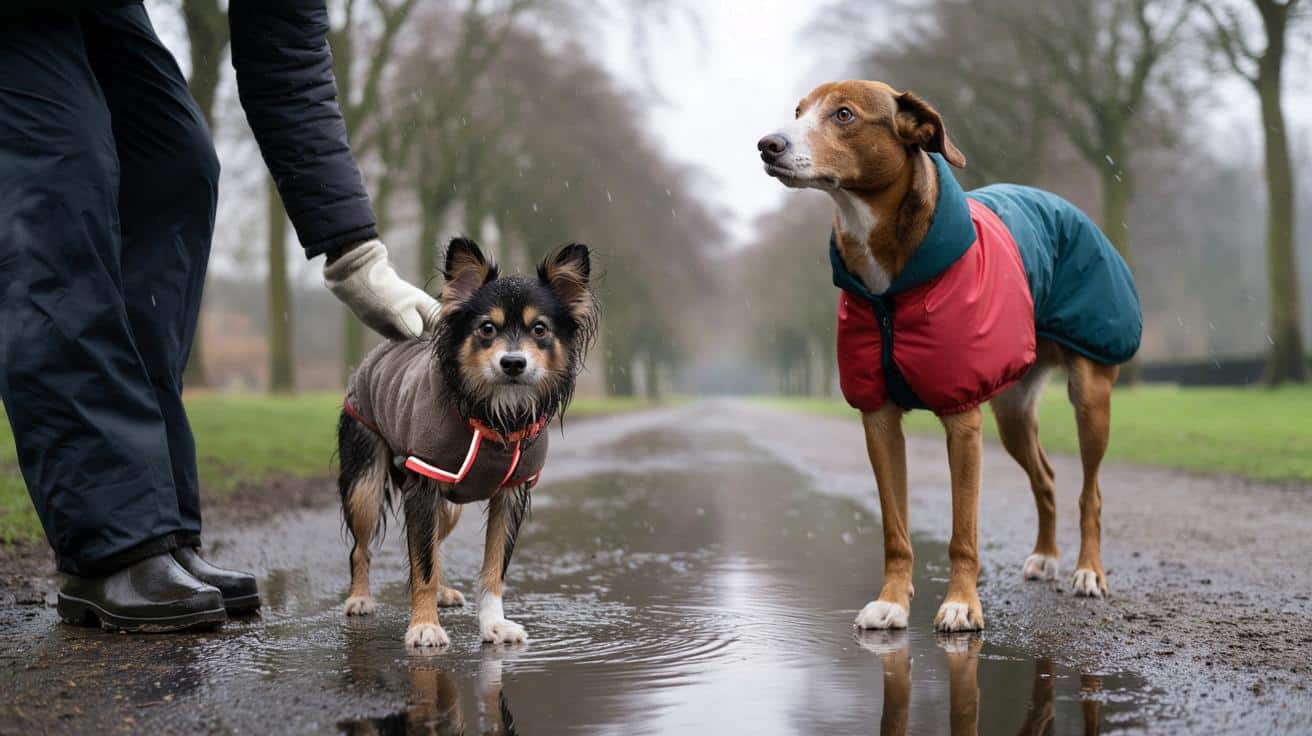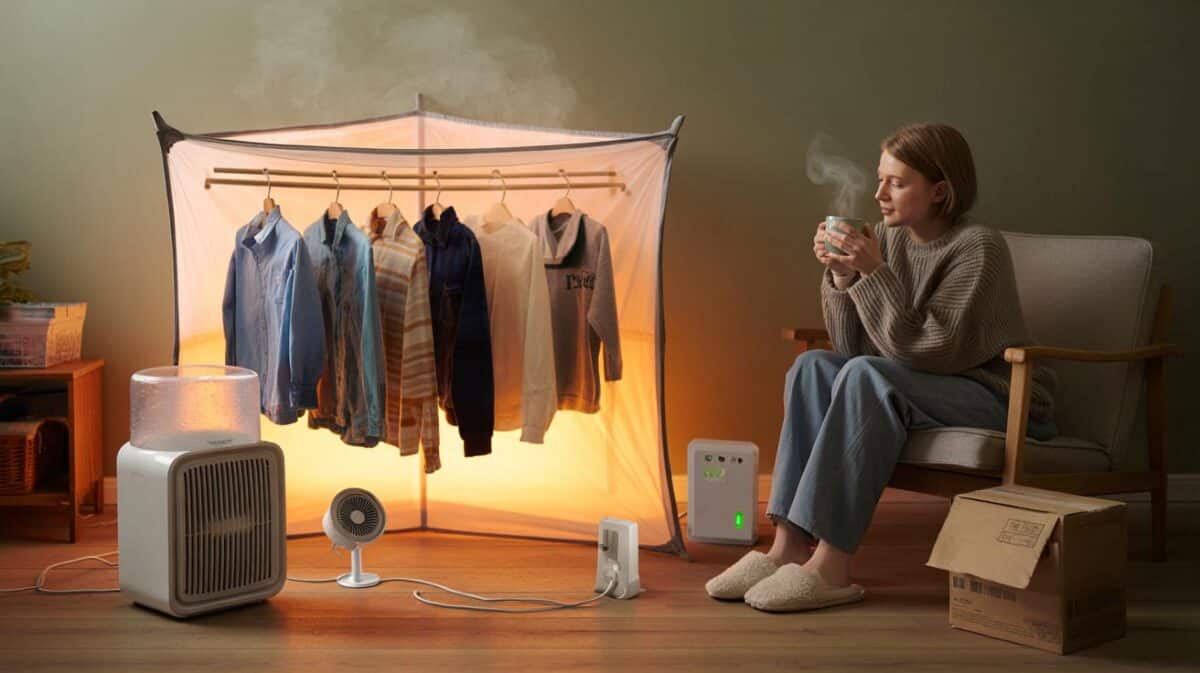A viral video from a Spanish vet has reignited Britain’s debate: when, exactly, should a dog wear a coat? The answer, she says, hinges on breed, body, age and the day’s weather, not fashion.
A social media vet sparks debate
The clip set out a simple idea. Not every dog needs a jacket, and not every cold day forgives bare fur. Thick-coated dogs bred for snow can shrug off a sleet shower. Needle-thin, short‑haired breeds struggle on the same pavement. The vet urged owners to read their own dog before reading the forecast.
There is no one-size-fits-all rule. Watch your dog, not the calendar. Comfort and welfare beat opinions from strangers.
Her breakdown mirrors what many trainers and surgeons tell clients in winter. Double-coated workers like Huskies and some Collies trap air and stay warm when moving. Small, fine‑coated dogs such as Chihuahuas, Miniature Pinschers and many terriers lose heat fast. Greyhounds, famous for low body fat, often shiver at anything below 8–10C, especially if they stand around.
Which dogs cope, which dogs chill
Breeds built for the cold
Huskies, Malamutes, Newfoundlands and similar northern types excel in low temperatures thanks to dense undercoats. Active Spaniels, Labradors and many shepherd breeds also manage well on brisk walks, particularly if the coat is clean, dry and not clipped short. Healthy adults keep core temperature by moving, so pace and duration matter.
Dogs that feel the nip
Short‑haired or hairless breeds—Greyhounds, Whippets, Italian Greyhounds, Dalmatians, Staffies, Pointers, Chinese Cresteds—cool quickly in wind and rain. Toy breeds sit close to the ground where air is colder and puddles soak bellies. Puppies, seniors, underweight dogs and those with arthritis or thyroid issues also chill sooner. Freshly clipped Poodles and doodle crosses may need a layer until regrowth returns.
Shivering, a tucked tail and a slowing pace mean your dog is losing heat. Add a layer, shorten the loop and warm them up.
Seven signs your dog needs a coat right now
- Shivering that does not stop after you start walking.
- Tucked tail, hunched posture, lifted paws or stiff movement.
- Reluctance to leave the house or constant pulling to turn back.
- Cold ears and belly to the touch after a few minutes outside.
- Wet fur from rain that is not drying because of wind.
- Older dog moving worse in the cold, especially with joint pain.
- Puppy or skinny dog tiring fast on a short route.
Temperature, wind and rain: what the numbers mean
Air temperature is only part of the story. Wind strips heat. Damp compresses fur and ruins insulation. Use this as a guide, then adjust to your dog.
| Air temp (C) | Wind/rain | Small short‑haired | Medium double‑coated | Large double‑coated |
|---|---|---|---|---|
| 10 to 7 | Dry, light wind | Fleece optional | No coat | No coat |
| 6 to 3 | Breezy or drizzle | Coat advised | Fleece optional | No coat if moving |
| 2 to 0 | Windy or steady rain | Insulated, water‑resistant coat | Light coat in wind/rain | Fleece if standing around |
| -1 to -5 | Any wind or sleet | Insulated coat, limit time | Insulated coat if slow pace | Fleece or brief walk only |
| -6 and below | Wind, ice or snow | Short, coated outings only | Short, coated outings only | Short, coated outings only |
If the coat is wet through, it stops insulating. Swap it for a dry one or head home.
How to choose and fit a dog coat
Fit and materials
Measure neck‑to‑tail along the spine and the deepest chest girth. A good coat sits flat, covers the chest, and leaves shoulders free. Pick breathable, water‑resistant fabric for rain; fleece or quilted for dry, biting cold. Reflective trim helps on dark pavements. Look for adjustable belly and chest straps that do not chafe.
What to avoid
Avoid tight armholes that rub armpits. Skip heavy padding for high‑energy dogs that run hot. Do not layer a wet fleece under a shell; it traps cold. Take coats off indoors to prevent overheating and skin irritation. Check for matting on double‑coated breeds under straps.
Owners weigh in
Responses under the vet’s video echoed real‑world experience. Greyhound owners said their pets beg for layers on raw mornings. One owner said a Yorkshire terrier wore a puffer first, then the larger dog demanded one too. Others noted that people have moved breeds worldwide, so a pet in Manchester may face weather its ancestors never met. The trendline is simple: if the dog relaxes and moves better in a coat, it is doing a job.
A quick cold‑walk checklist
- Warm up for five minutes at home, then keep a steady pace outside.
- Pick a loop with shelter from wind and spots to cut short if needed.
- Pack a small towel; dry chest, belly and paws the moment you finish.
- Rinse paws after salted pavements; grit can burn skin and cause stomach upset.
- Use reflective gear for dog and human; winter light is brief.
- Shorten play stops; standing still chills dogs faster than trotting.
What vets watch for in winter
Early hypothermia shows as shivering, slow responses and clumsy steps. Ears, tail tips and paws risk frostbite in sub‑zero wind. Arthritic dogs can stiffen quickly once muscles cool down. A simple insulated layer often keeps joints supple enough to enjoy a 20‑minute loop. Coats do not replace movement, food or grooming. A clean, unmatted coat traps more air and warms better than a dirty one.
If your dog shivers after five minutes at 5C with drizzle, add a coat. If your Husky drags you at -2C on dry snow, skip it.
More useful details to get right
Check weight through winter; thin dogs lose heat faster, and heavy coats hide body changes. Teach your dog to love the coat with treats and short sessions indoors, so you do not fight zips at the door. If your dog hates hoods, choose a high collar style instead. For anxious dogs, a snug but flexible fit can feel reassuring without limiting stride.
Plan by numbers if you like structure. Set a personal threshold: for example, small short‑haired dogs wear a coat at 7C with wind, 10C with rain; seniors wear one 2–3 degrees earlier. Keep notes for a week. You will spot the pattern quickly and leave the guesswork behind when the next squall rolls in.








